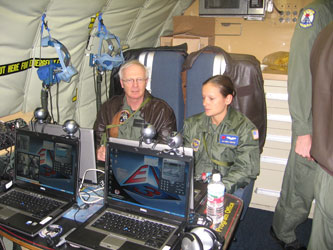G. Donald Richardson became the first recipient of a PhD in the UCSB Department of Geography in the summer of 1982 upon successfully defending his dissertation on “Spatial Cognition.” At that time, Reg Golledge was the Chair of the Department and the Chair of Don’s PhD Committee (other members included Tobler, T. Smith, Hubert, and Pellegrino), and Reg recalls that the race to become the first PhD was a close affair. Thomas Logan became our second PhD in the fall of 1983 with a dissertation titled “Regional Biomass Estimation of a Coniferous Forest Environment from NOAA-AVHRR Satellite Imagery” (Jack Estes, Chair), and, since that auspicious beginning, the Department has granted a total of 151 Doctorates to date.
The Geography Doctoral Program was initiated by David Simonett, Jack Estes, Reg Golledge, Waldo Tobler, Jeff Dozier, Alan Strahler, and Terry Smith in the late 1970s when they submitted a proposal for the program to the faculty legislature. The program was approved (by a one vote margin!) and in place by 1980. 1982 was a banner year for the department—apart from granting the first PhD, 1982 was our first $1 million year in terms of research funding; it marked the establishment of our own computer center; Waldo Tobler was elected to the National Academy of Sciences (and hiked to the top of Mt Whitney to celebrate); and Joel Michaelsen and Helen Couclelis were hired. For more information about the early days in the Department, see https://legacy.geog.ucsb.edu/about/history/.
Today, Dr. Richardson works at the Institute for Defense Analyses and recently provided the following (and fascinating) comments about his work and its relation to his training in Geography (above is a picture of Don from a recent test flight on an aircraft called “Big Crow.” He’s seated next to an airman while they test the video teleconferencing capabilities between a network of ground and airborne platforms):
I came to the Institute for Defense Analyses (IDA) in 1984. Prior to IDA, I worked for a consulting firm in Monterey, California and then another in Albuquerque.
IDA is a federally funded research and development center (aka “think tank”) that provides scientific advice to the United States government on national security and defense-related issues. Over sixty percent of the research staff at IDA have a doctoral degree. Most of the researchers have their PhDs in engineering and hard science, such as physics, chemistry, and mathematics. Further, these degrees were granted by top-notch universities, such as Caltech, MIT, Princeton, Penn, and so on. IDA is a non-profit company with a very academic environment.
Since 1984, I have been working in the area of operational test and evaluation. In essence, operational test and evaluation determines if military equipment actually works when placed in the hands of actual users in the field. For the military, this means: “Can soldiers use the equipment to accomplish the intended mission?”
To answer this question, usually an experiment must be designed, conducted, analyzed, and then reported on. The bedrock principle that must underlie this experimentation is the scientific method. A solid grounding in the scientific method is common to all the PhDs here at IDA, whether they be physicists, nuclear engineers, or even a geographer.
Most of the experimentation occurs at various test ranges located throughout the country. Early in my career at IDA, I worked on air defense weapons that were intended to shoot down Soviet aircraft. I have seen over 40 aircraft shot from the sky during various test trials.
On the other hand, some equipment is “tested” during actual military operations rather than under controlled conditions at a test range. In 1996, I was assigned to operationally test and evaluate an airborne surveillance aircraft. The aircraft had a radar onboard. The original plan was to test the aircraft at a test range. However, in January 1996, the US and NATO sent ground forces into Bosnia to stop the ethnic genocide within the former Yugoslavia. The surveillance aircraft was deployed to Europe to support NATO’s military operations in Bosnia. During those operations, the aircraft was used to monitor the Dayton Peace Accords that were signed in 1995. I spent six weeks in Europe in 1996, flying onboard the aircraft and examining the surveillance information that was being sent to various places on the ground.
Currently, I am working on several other “spy” planes. These aircraft carry radar, electro-optics, infrared, sonar, and other types of sensors. Thus, in many respects, I am a remote sensor. However, I have found that the biggest problem to overcome is not the physics and engineering issues with these aircraft. The biggest problem is actually using the sensor data to accomplish a mission. Thus, my training as a behavioral geographer serves me well. The biggest part of accomplishing a military mission is often processing the information and using it to solve the problem.
During my time at IDA, I have traveled extensively. I have been to Europe 20 times, to Asia several times, and back and forth across the USA countless times. Doing field work is one of the most enjoyable aspects of the job here at IDA.


